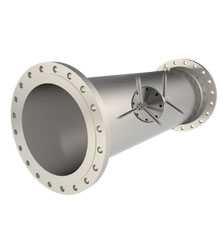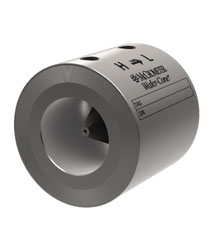- PRODUCTS
- INDUSTRIES
- RESOURCES
- SUPPORT
Flow Meters for Liquified Natural Gas & Compressed Natural Gas
Flow Meters for LNG and CNG
LNG & CNG Flow Measurement, Meet the V-Cone®.
Engineers and technicians in the oil and gas industry know that whether compressed natural gas (CNG) or liquified natural gas (LNG) are chosen during the transportation process, the end goal is always efficiency and safety. Accurate measurement of this natural resource is critical at the production point, purification process, liquefaction process, transportation, and regassification.
The bottom line ( your bottom line): LNG and CNG flow applications can rely on the V-Cone for accurate, reliable flow measurement for 25+ years. When efficiency, environmental safety, and meeting customer demand are critical, the V-Cone meets and exceeds expectations.

Here's how to:
Overcome these LNG & CNG flow application challenges
1. Pipeline leakage and potential issues
Installing multiple flow meters throughout LNG/CNG facility processes acts as a safeguard in Safety Instrumented Systems (SIS), and can even help detect underperforming equipment and malfunctioning valves, pumps, etc. A highly accurate and repeatable flow meter such as the V-Cone sends operators and technicians data to their streamlined management software, allowing them to pinpoint unexpected flow rates and address issues before they become costly.
2. Fatigue and pipeline stresses
Prevent problems with meters and brittle fracture, fatigue cracks, and meter failure by choosing a flow meter that can handle cryogenic flow temperatures (-320 degrees Fahrenheit, -195 degrees Celsius) and offers flexible material construction. Additionally, choose a flow meter manufacturer who can conduct non-destructive tests (NDTs) on your meter prior to installation.
3. Remote locations and tough data reliability
Just because your natural gas source and liquefaction processes are in remote locations doesn’t mean you can’t get the flow data you need. Invest in a flow meter with a high-powered transmitter (and even a flow computer) that can send flow data directly to your management software. Better yet, customize your flow meter with additional taps for measurement of pressure, temperature, and more, to create more data points in your overall flow measurement IoT.
4. Standardizing on flow measurement technology
Invest in a flow meter for LNG and CNG that can be applied to other measurement points within your natural gas extraction and transportation processes. The V-Cone is successful and beneficial in LNG cryogenic applications and CNG pipeline transportation applications but can also measure the various gaseous components during the separation and extraction processes. Additionally, the V-Cone can measure the coolant running through the heat exchanger during the liquefaction process, and the LNG on the FPSO carriers.
LNG/CNG Flow Measurement by the Application
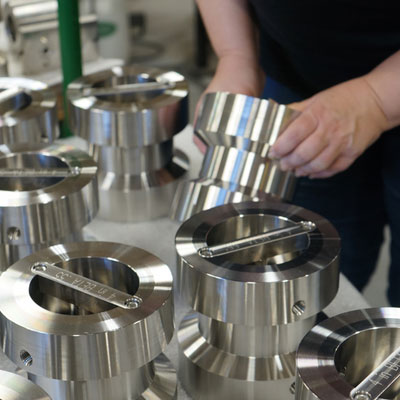
McCrometer’s flow meters are installed in a variety of LNG/CNG applications:
- Cold box
- Custody transfer
- Cryogenic
- LNG storage
- LNG tankers
- LNG vaporizer
- LNG transmission grid
- Liquefaction
- LNG terminals
- Regassification
McCrometer LNG & CNG Flow Meter Suite of Products
Differential Pressure Flow Meters
McCrometer’s proprietary differential pressure design offers 25+ year lifespan, precision accuracy and repeatability, and unmatched customization for the ideal application solution.
V-Cone®
McCrometer’s V-Cone® flow meter is an advanced differential pressure instrument ideal for liquid, steam and gas flow measurement in the most challenging conditions. Offers ±0.5% accuracy for line sizes .5” – 120” (12.7mm – 3048mm).
Wafer-Cone®
The Wafer-Cone features the design benefits of the V-Cone but with a flangeless design and a removeable and replaceable cone for changing conditions. Offers ±1% accuracy for line sizes 1” – 6” (25.4mm – 152.4mm).
The V-Cone for Liquid & Compressed Natural Gas
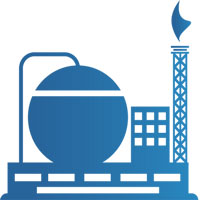
Why choose the V-Cone?
Compared to other differential pressure flow meters such as the orifice plate and Venturi, the V-Cone simply performs better in harsh conditions. LNG applications involve harsh flow media, extremely cold temperatures (-160°F or -106° for transport), and highly pressurized pipelines. Additionally, surrounding equipment causing noise, and limited space for straight run can be a challenge. Other DP meters and even Coriolis and clamp-on ultrasonics cannot handle the process conditions and the application environment as successfully as the V-Cone suite of flow meters.
Many applications, one meter.
The V-Cone’s substantial custom options allow it to be installed in numerous oil and gas projects. Custom lay lengths, an array of end connections, and taps make the meter extremely retrofit friendly and able to be installed in tough locations where space and weight are a challenge (such as LNG carriers!). The V-Cone is self-conditioning, necessitating minimal to no straight-run and requiring virtually no maintenance over its lifetime. The V-Cone is the robust, durable meter that helps engineers and technicians avoid years of potential upkeep and expenditures.
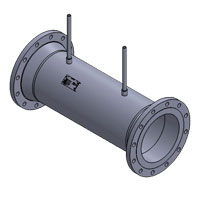
Request Info
Have questions? Need details? No one knows more about agriculture and irrigation flow meters than our team.
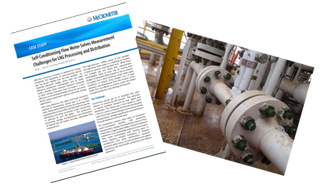
Further Reading
Check out the variety of information available about the cooling water product suite.


